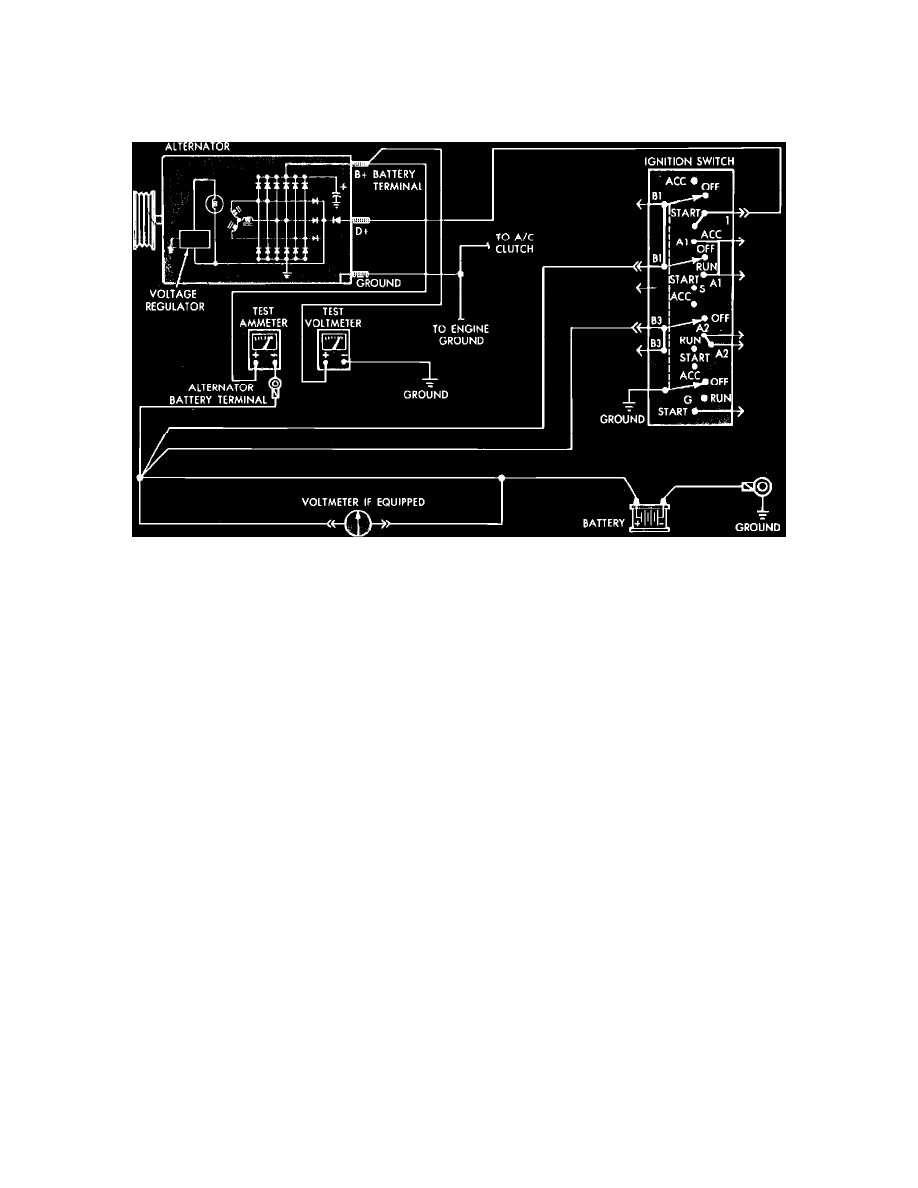Daytona L4-135 2.2L SOHC (1984)

4.
Adjust carbon pile rheostat and engine speed to obtain 28---35 amps at 13.5 volts and 500 RPM, 75---85 amps at 13.5 volts and 1000 RPM and 89
amps at 13.5 volts and 2000 RPM. While increasing engine speed, do not allow voltage to exceed 16 volts.
5.
If amperage does not meet specifications, remove alternator from vehicle and perform bench tests.
Voltage Regulator Test
Fig. 6 Voltage regulator test. Models w/integral regulator
1.
Disconnect ground cable from battery and the "Bat" lead from alternator output terminal.
2.
Complete test connections as shown.
3.
Ensure voltmeter reads zero. Any other voltage reading indicates a defective alternator.
4.
Turn ignition switch to On position and ensure voltmeter reads within one-half volt of battery voltage.
5.
Connect a suitable tachometer to engine, then start engine with a jumper wire connected between test ammeter terminals.
6.
Remove jumper wire from ammeter terminals and immediately increase engine speed to 2000---3000 RPM while noting ammeter reading.
7.
If ammeter reading is 10 amps or less, recheck voltmeter reading without changing engine speed to obtain a correct charging voltage reading.
Charging voltage should be 13.9---14.2 volts at 77°F, with an allowance of .05---.09 volt for each 18°F variation of temperature.
8.
If ammeter reading is more than 10 amps, continue charging battery until amperage falls below 10 amps, or replace battery with a fully charged
one.
